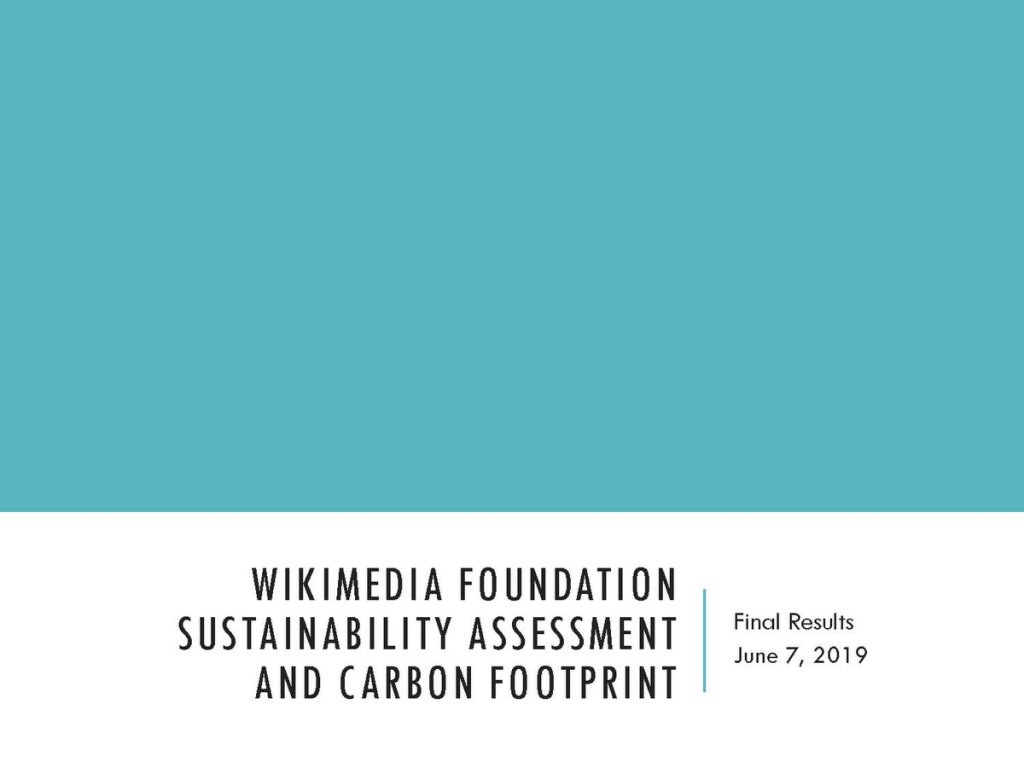Right in time for the global climate protests in September, the Wikimedia Foundation announced the publication of its first-ever sustainability assessment in a blog post titled “How the Wikimedia Foundation is making efforts to go green”.
In doing so, the Foundation met one of its goals from the 2018-19 annual plan, which was the first-ever WMF annual plan to include an environment-related item. The assessment was created by an external sustainability consultancy overseen first by Erika Bjune and later by Deb Tankersley.
The result: in 2018, only 6% of the 2.8 gigawatt hours powering the Wikimedia servers came from green sources, resulting in 1.2 kilotonnes of carbon emissions. These make up the largest part of the Foundation’s carbon footprint, which is why the assessment is unambiguous about its core recommendation:
“Moving servers to renewable energy options is the single most impactful thing to reduce the organization’s carbon footprint.”
2019 WMF sustainability assessment
This finding is identical to the first of the Wikimedia Sustainability Initiative‘s three goals, which I first formulated back in 2015. While the assessment contains the results of an extensive survey of WMF employees, it does not mention the Wikimedia Sustainability Initiative, which is currently supported by 600 community members.
What’s next?
The WMF is now creating a ‘sustainability roadmap’ outlining concrete steps to reduce its environmental impact – a project that had originally been scheduled for completion together with the sustainability assessment. In addition to the servers, it will need to address the issue of international travel, which also contributes significantly to our carbon footprint.
The work will be conducted by an external consultant overseen by Lydia Hamilton of the Wikimedia Foundation’s Operations team. After I pointed out that the (unpublished) WMF 2019-20 annual plan did not meet the requirement set in a 2017 resolution of the WMF board to “include an environmental impact statement”, the plan might now see an update. A recent WMF report even mentions the “exploration” of a “CO2 reduction target”.
To say the least, I am looking forward to finally having a sustainability roadmap for the Wikimedia movement – and to implementing it, because the Wikimedia Foundation has yet to take action to reduce its carbon footprint. We all know that it’s high time: The poles are melting, the world’s forests are burning – the facts are all on Wikipedia. As a movement, we must live up to our responsibility and use our voice to set an example for others.
image credits:
Øyvind Holmstad, CC BY-SA 4.0
Ibarna, CC BY-SA 2.0
Fars News Agency, CC BY 4.0

Can you help us translate this article?
In order for this article to reach as many people as possible we would like your help. Can you translate this article to get the message out?
Start translation



